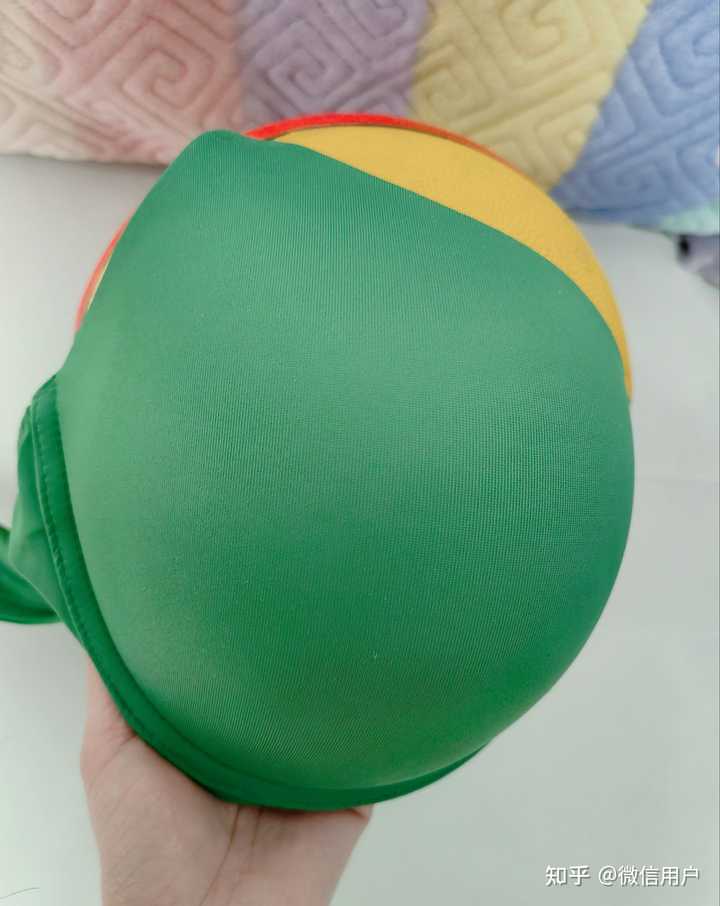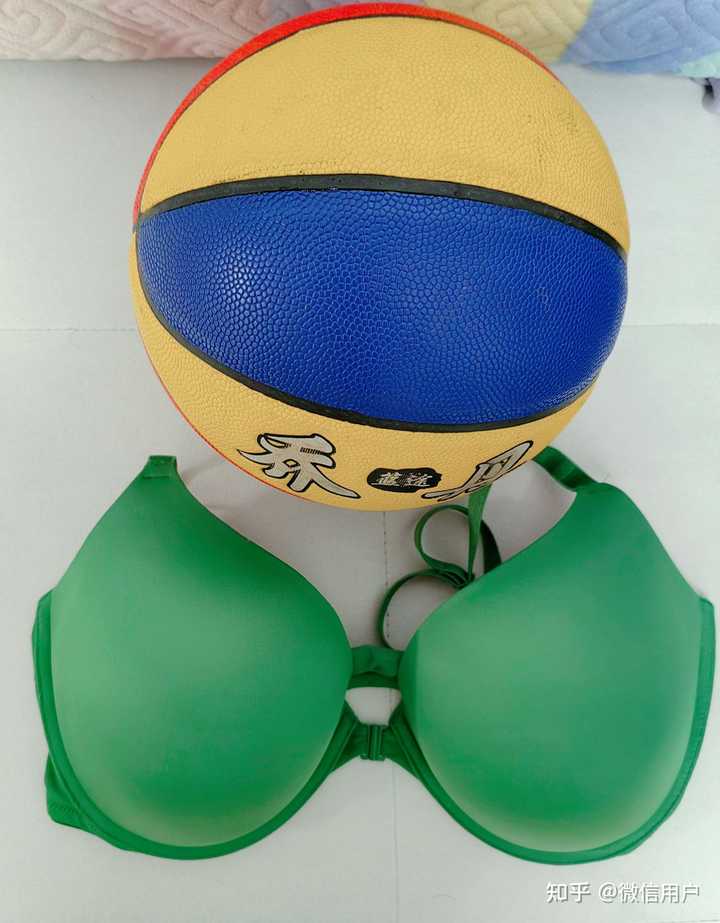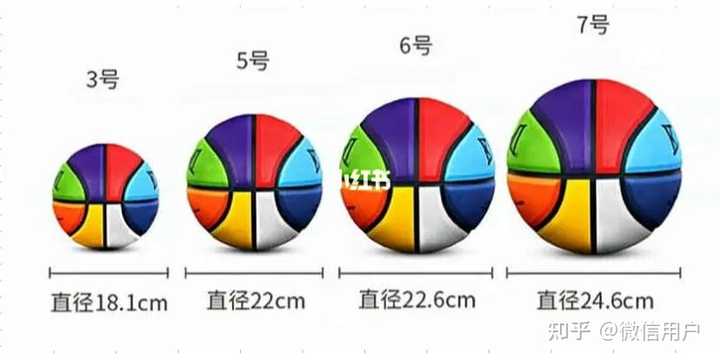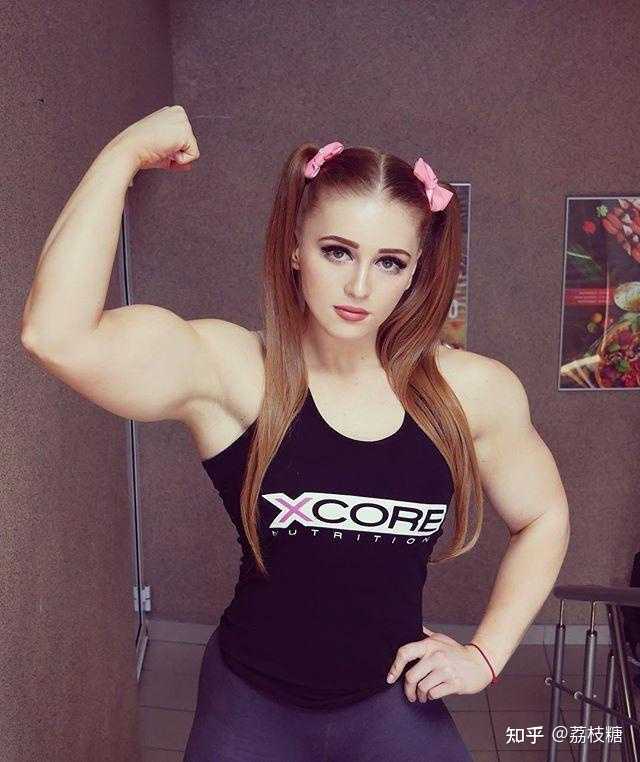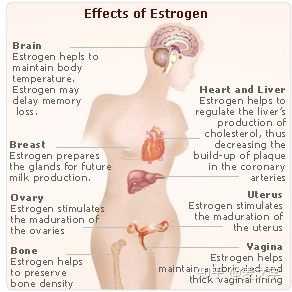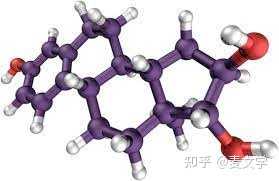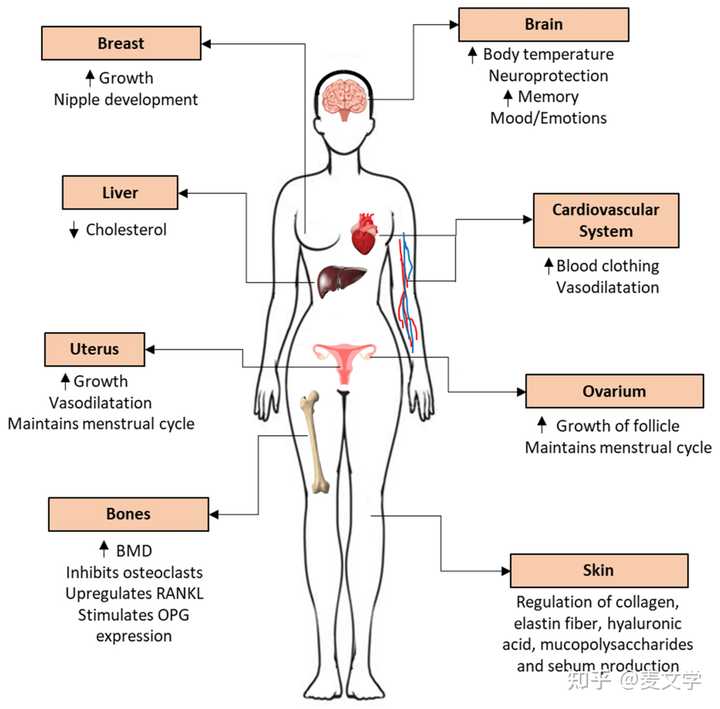Akers, R. M., C. W. Heald, and T. L. Bibb. 1976. Stimulatory effect of prepartum milk removal on bovine lactogenesis measured cytologically. Page 58 in Proc. 71st Ann. Meeting, Amer. Dairy Sci. Ass., Champaign, IL 61820. (Abstr.)
Ancel, P., and P. Bouin. 1909. Action du corps juane vrai sur la gland mammaire. Comp. rend. Soc. de Biol. 66:605.
Ancel, P., and P. Bouin. 1911. Recherches sur les fonctions du corps juane gestatif, lI. Sur le determinisme du development de la gland mammaire an tours de la gestation. J. Physiol. et Path. Gen. 13:31.
Anderson, R. R. 1974. Endocrinological Control. Page 97 in B. L. Larson and V. R. Smith, ed. Lactation: A comprehensive treatise, Vol. 1. Academic Press, Inc., New York and London.
Asdell, S. A. 1931. Recent developments in the field of sex hormones. CorneU Vet. 21:147.
Atger, M., E. E. Baulieu, and E. Milgrom. 1974. An investigation of progesterone receptors in guinea pig vagina, uterine cervix, mammary glands, pituitary and hypothalamus. Endocrinology 94:161.
Bash, K. 1909. Uber experimentelle ausliSsung von milchabsonderung. Monatschr. f. Kinderh. 8:513.
Benson, G. K., A. T. Cowie, C. P. Cox, D. S. Flux, and S. J. Folley. 1955. Studies on the hormonal induction of mammary growth and lactation in the goat. I1. Functional and morphological studies of hormonally developed udders with special reference to the effect of 'triggering' doses of oestrogen. J. Endocrinol. 13:46.
Buttle, H. L., and Forsyth, I. A. 1976. Placental lactogen in the cow. J. Endocrinol. 68:141.
Callahan, C. J., J. F. Fessler, R. E. Erb, E. D. Plotka, and R. D. Randel. 1969. Prolonged gestation in a Holstein-Friesian cow. Clinical and reproductive steroid studies. Cornell Vet. 49: 370.
Catchpole, H. R., W. R. Lyons, and W. M. Regan. 1933. Induction of lactation in heifers with the hypophyseal lactogenic hormone. Proc. Soc. Exp. Biol. Med. 31:301.
Ceriani, R. L. 1970. Fetal mammary gland differentiation in vitro in response to hormones. 1. Morphological findings. Develop. Biol. 21:506.
Ceriani, R. L. 1970. Fetal mammary gland differentiation in vitro in response to hormones. II. Biochemical findings. Develop. Biol. 21:530.
Chatterton, R. T., Jr., A. J. Chatterton, and L. HeUman. 1969. Metabolism of progesterone by the rabbit mammary gland. Endocrinology 85:16.
Chew, B. P., H. F. Keller, R. E. Erb, and P. V. Malven. 1976. Endocrinology of retained fetal membranes in cows. J. Anirn. Sci. 43:278. (Abstr.)
Collier, R. J., D. E. Banman, W. J. Croom, and R. L. Hays. 1976. Lactogenesis in explant cultures of cow mammary tissue. Page 59 in Proc. 71st Ann. Meeting, Amer. Dairy Sci. Ass., Champaign, 1L 61820. (Abstr.)
Collier, R. J., D. E. Bauman, and R. L. Hays. 1975. Milk production and reproductive performance of cows hormonally induced into lactation. J. Dairy Sci. 58:1524.
Collier, R. J., W. J. Croom, D. E. Bauman, R. L. Hays, and D. R. Nelson. 1976. Cellular studies of mammary tissue from cows hormonally induced into lactation: Lactose and fatty acid synthesis. J. Dairy Sci. 59:1226.
Convey, E. M. 1974. Serum hormone concentrations in ruminants during mammary growth, lactogenesis, and lactation: A review. J. Dairy Sci. 57:905.
Convey, R. M., H. A. Tucker, V. G. Smith, and J. Zolman. 1973. Bovine prolactin, growth hormone, thyroxine and corticoid response to thyrotropin-releasing hormone. Endocrinology 92:471.
Cowie, A. T. 1970. Influence of hormones on mammary growth and milk secretion. Page 123 in I. R. Falconer, ed. Lactation. Butterworths, London.
Cowie, A. T., G. S. Knaggs, and J. S. Tindal. 1964. Complete restoration of lactation in the goat after hypophysectomy. J. Endocrinol. 28: 267.
D'Amico, M. F., R. E. Erb, and P. V. Malven. 1976. Effect of TRIt on induction of lactation in ewes pretreated with ovarian steroids. Page 141 in Proc. 71st Ann. Meeting, Amer. Dairy Sci. Ass., Champaign, IL 61820. (Abstr.)
DeFremery, P. 1936. On the influence of different hormones on lactation. J. Physiol. 87:50 P. (Abstr.)
Denamur, R. 1971. Hormonal control of [actogenesis. J. Dairy Res. 38:237.
DeSombre, E. R. 1972. Mechanism of action of the female sex hormones. Ann. Rev. Biochem. 41:203.
Dobson, H., and P. 19. G. Dean. 1974. Radloimmunoassay of oestrone, oestradiol-17a and 17fl in bovine plasma during the oestrus cycle and last stage of pregnancy. J. Endocrinol. 61:479.
Ebner, K. E., and F. L. Schanbacher. 1974. Biochemistry of lactose and related carbohydrates. Page 77 in B. L. Larson and V. R. Smith, ed. Lactation: A comprehensive treatise, Vol. II. Academic Press Inc., New York and London.
Edgerton, L. A., and H. D. Hafs. 1973. Serum luteinizing hormone, prolactin, g[ucocotticoid, and progestin in dairy cows from calving to gestation. J. Dairy Sci. 56:451.
JAMA Pediatrics, 169(6). doi:10.1001/jamapediatrics.2015.1025
Andreas, N. J., Kampmann, B., & Mehring Le-Doare, K. (2015). Human breast milk: A review on its
composition and bioactivity. Early Human Development, 91(11), 629-635.
Azad, M., Konya, T., Persaud, R., Guttman, D., Chari, R., Field, C.,... the CHILD Study Investigators.
(2016). Impact of maternal intrapartum antibiotics, method of birth and breastfeeding on gut
microbiota during the first year of life: A prospective cohort study. BJOG: An International
Journal of Obstetrics & Gynaecology, 123(6), 983-993. doi:10.1111/1471-0528.13601
Becker, G. E., Smith, H. A., & Cooney, F. (2016). Methods of milk expression for lactating women.
Cochrane Database of Systematic Reviews, 9, 1-166.
Bravi, F., Wiens, F., Decarli, A., Dal Pont, A., Agostoni, C., & Ferraroni, M. (2016). Impact of
maternal nutrition on breast-milk composition: A systematic review. American Journal of
Clinical Nutrition, 104(3), 646-662.
Breastfeeding Committee for Canada. (2016). The revised BFI 10 Steps and WHO Code Outcome
Indicators for Hospitals and Community Health Services. Retrieved from
http://www.breastfeedingcanada.ca/BFI.aspx
Dani, C., Cecchi, A., Commare, A., Rapisardi, G., Breschi, R., & Pratesi, S. (2015). Behavior of
the Newborn during Skin-to-Skin. Journal of Human Lactation, 31(3), 452-457.
doi:10.1177/0890334414566238
Garcia-Fortea, P., Gonzalez-Mesa, E., Blasco, M Cazoria, O., Delgado-Rios, M., & Gonzalez-
Valenzuela, M. J. (2014). Oxytocin administered during labor and breast-feeding: A retrospective
cohort study. The Journal of Maternal-Fetal and Neonatal Medicine, 27(15), 1598-1603.
Gardner, H., Kent, J. C., Hartmann, P. E., & Geddes, D. T. (2015). Asynchronous milk ejection in
human lactating breast: Case series. Journal of Human Lactation, 31(2), 254-259.
Geddes, D. T., Aljazaf, K. M., Kent, J. C., Prime, D. K., Spatz, D.L., Garbin, C. P.,... Hartmann, P. E.
(2012). Blood flow characteristics of the human lactating breast. Journal of Human Lactation,
28(2), 145-152.
Godel, J. C. (2007). Vitamin D supplementation: Recommendations for Canadian mothers and
infants. Retrieved from https://www.cps.ca/en/documents/position/vitamin-d
Hale, T. W., & Hartmann, P. E. (2017). Textbook of human lactation. New York: Springer.
Hassiotou, F., Hepworth, A. R., Williams, T. M., Twigger A. J., Perrella, S., Lai, C. T,... Hartmann, P. E.
(2013). Breastmilk cell and fat contents respond similarly to removal of breastmilk by the
infant. PLoS One 8(11), 1-11.
Hollis, B. W., PhD, Wagner, C. L., MD, Howard, C. R., MD, Ebeling, M., RA, Shary, J. R., MS, Smith, P.
G., BSN,... Hulsey, T. C., ScD. (2015). Maternal Versus Infant Vitamin D Supplementation
During Lactation: A Randomized Controlled Trial. Pediatrics, 136(4), 625-634. doi:10.1542/
peds.2015-1669d
Keikha, M., Bahreynian, M., Saleki, M., & Kelishadi, R. (2017). Macro- and micronutrients of human
milk composition: Are they related to maternal diet? A comprehensive systematic review.
Breastfeeding Medicine, 12(9), 517-527.
Klopp, A., Vehling, L., Becker, A., Becker, A. B., Subbarao, P., Mandhane, P.,... Azad, M. B. (2017).
Modes of infant feeding and the risk of childhood asthma: A prospective birth cohort study.
The Journal of Pediatrics, 190, 192-199.
Kujawa-Myles, S., Noel-Weiss, J., Dunn, S., Peterson, W. E., & Cotterman, K. J. (2015). Maternal
intravenous fluids and postpartum breast changes: A pilot observational study. International
Breastfeeding Journal, 10(18), 1-9.
Lau,Y., Tha, P., Ho-Lim, S., Wong, L., Lim,P., Nurarah, B., Stoey, S. (2017). An analysis of the
effects of intrapartum factors, neonatal characteristics and skin-to-skin contact early
breastfeeding initiation. Maternal Child Nutrition. doi: 10.1111/mcn.12492.
Lawrence, R. A., & Lawrence, R. M. (2016). Breastfeeding: A guide for the medical profession
(8th ed.). Philadelphia: Elsevier.
Macias, H., & Hinck, L. (2012). Mammary gland development. Wiley Interdisciplinary Review of
Developmental Biology, 1(4), 533-557.
Maningat, P. D., Sen, P., Rijnkels, M., Sunehag, A. L., Hadsell, D. L., Bray, M., & Haymond, M. W.
2009). Gene expression in the human mammary epithelium during lactation: the milk fat
globule transcriptome. Physiological Genomics, 37(1), 12–22.
Marraccini, M. E., & Gorman, K. S. (2015). Exploring placentophagy in humans: Problems and
recommendations. Journal of Midwifery and Women’s Health, 60(4), 371-379.
McFadden, A., Gavine, A., Renfrew, M., Wade, A., Buchanan, P., Taylor, J., Veitch, E., Rennie, A.,
Crowther, S., Neiman, S., & MacGillivray, S. (2017). Support for the healthy breastfeeding
mothers with healthy term babies (review). Cochrane Database of Systematic Reviews. 2, 1-30.
Moore, E. R., Bergman, N., Anderson, G. C., & Medley, N. (2016). Early skin-to-skin contact for
mothers and their healthy newborn infants. Cochrane Database of Systematic Reviews,11, 1-30.
Moossavi, S., Miliku, K., Sepehri, S., Khafipour, E., & Azad, M. B. (2018). The prebiotic and probiotic
properties of human milk: Implications for infant immune development and pediatric asthma.
Frontiers in Pediatrics, 6(197), 1-7.
Ndikom, C. M., Fawole, B., & Ilesanmi, R. E. (2014). Extra fluids for breastfeeding mothers for
increasing milk production. Cochrane Database of Systematic Reviews, 11(6), 1-19.
Netting, M., Middleton, P., Makrides, M. (2013). Does maternal diet during pregnancy and lactation
affect outcomes in offspring? A systematic review of food-based approaches. Nutrition.
30(11-12), 1225-1241
Netting, M. J., Campbell, D. E., Koplin, J. J., Beck, K. M., Mcwilliam, V., Dharmage, S. C.,... Allen, K. J.
(2017). An Australian Consensus on Infant Feeding Guidelines to Prevent Food Allergy: Outcomes
From the Australian Infant Feeding Summit. The Journal of Allergy and Clinical Immunology: In
Practice, 5(6), 1617-1624. doi:10.1016/j.jaip.2017.03.013
Noel-Weiss, J., Woodend, A. K., Peterson, W. E., Gibb, W., & Groll, D. L. (2011). An observational study
of associations among maternal fluids during parturition, neonatal output, and breastfed newborn
weight loss. International Breastfeeding Journal, 6(9), 1-10.
Nommsen-Rivers, L. A., Chantry, C. J., Peerson, J. M., Cohen, R. J., & Dewey, K. G. (2010). Delayed onset
of lactogenesis among first-time mothers is related to maternal obesity and factors associated
with ineffective breastfeeding. American Journal of Clinical Nutrition, 92(3), 574-584.
Nommsen-Rivers, L. A. (2016). Does insulin explain the relation between maternal obesity and poor
lactation outcomes? An overview of the literature. Advances in Nutrition, 7(2), 407–414.
Pannaraj, P. S., Li, F., Cerini, C., Bender, J. M., Yang, S., Rollie, A.,...Aldrovandi, G. M. (2017). Association
between breast milk bacterial communities and establishment and development of the infant
gut microbiome. Journal of American Medical Association Pediatrics, 17(7), 647-654.
Pollard, M. (2011). Evidence-based care for breastfeeding mothers: A resource for midwives and allied
healthcare professionals. Retrieved from EBSCO: eBook Collection.
Pundir, S., Wall, C. R., Mitchell, C. J., Thorstensen, E. B., Lai, C. T., Geddes, D. T., & Cameron-Smith, D.
(2017). Variation of human milk glucocorticoids over 24 hour period. Journal of Mammary Gland
Biology and Neoplasia, 22(1), 85-92. doi:10.1007/s10911-017-9375-x
Sosa-Castillo, E., Rodriguez-Cruz, M., & Molto-Puigmarti, C. (2017). Genomics of lactation: role of
nutrigenomics and nutrigenetics in the fatty acid composition of human milk. British Journal of
Nutrition, 118(3), 161-168.
Stuebe, A. M., Meltzer-Brody, S., Pearson, B., Pederson, C., & Grewen, K. (2015). Maternal
neuroendocrine serum levels in exclusively breastfeeding mothers. Breastfeeding Medicine, 10(4),
197-202.
Uvn?s-Moberg, K., Handlin, L., & Petersson, M. (2015). Self-soothing behaviors with particular reference
to oxytocin release induced by non-noxious sensory stimulation. Frontiers in Psychology, 5(1529),
1-16.
Wambach, K., & Riordan, J. (2016). Breastfeeding and human lactation (5th ed.). Burlington (MA):
Jones & Bartlett Learning.
Williams, J. E., Price, W. J., Shafii, B., Yahvah, K. M., Bode, L., McGuire, M. A., & McGuire, M. K. (2017).
Relationships among microbial communities, maternal cells, oligosaccharides, and macronutrients
in human milk. Journal of Human Lactation, 33(3), 540-551.
Widstr?m, A., Lilja, G., Aaltomaa-Michalias, P., Dahll?f, A., Lintula, M., & Nissen, E. (2010). Newborn
behaviour to locate the breast when skin-to-skin: A possible method for enabling early
self-regulation. Acta Paediatrica, 100(1), 79-85. doi:10.1111/j.1651-2227.2010.01983.x
Witkowska-Zimny, M. & Kaminska-El-Hassan, E. (2017). Cells of human breast milk. Cellular and
Molecular Biology Letters, 22(11), 1-12.
Ronnie Ann Rosenthal; Michael E. Zenilman; Mark R. Katlic (29 June 2013). Principles and Practice of Geriatric Surgery. Springer Science & Business Media. pp. 325–. ISBN 978-1-4757-3432-4.
Shane Bullock; Majella Hayes (20 September 2012). Principles of Pathophysiology. Pearson Higher Education AU. pp. 349–. ISBN 978-1-4425-1045-6.
Chong YM, Subramanian A, Sharma AK, Mokbel K (2007). "The potential clinical applications of insulin-like growth factor-1 ligand in human breast cancer". Anticancer Res. 27 (3B): 1617–24. PMID 17595785.
Shim KS (2015). "Pubertal growth and epiphyseal fusion". Ann Pediatr Endocrinol Metab. 20 (1): 8–12. doi:10.6065/apem.2015.20.1.8. PMC 4397276. PMID 25883921.
Jaak Jürim?e; Andrew P. Hills; T. Jürim?e (1 January 2010). Cytokines, Growth Mediators, and Physical Activity in Children During Puberty. Karger Medical and Scientific Publishers. pp. 5–. ISBN 978-3-8055-9558-2.
Ruan W, Kleinberg DL (1999). "Insulin-like growth factor I is essential for terminal end bud formation and ductal morphogenesis during mammary development". Endocrinology. 140 (11): 5075–81. doi:10.1210/endo.140.11.7095. PMID 10537134.
Kleinberg DL, Feldman M, Ruan W (2000). "IGF-I: an essential factor in terminal end bud formation and ductal morphogenesis". J Mammary Gland Biol Neoplasia. 5 (1): 7–17. doi:10.1023/A:1009507030633. PMID 10791764. S2CID 25656770.
Pauline M. Camacho (26 September 2012). Evidence-Based Endocrinology. Lippincott Williams & Wilkins. pp. 20, 98. ISBN 978-1-4511-7146-4.
Kleinberg DL, Ruan W (2008). "IGF-I, GH, and sex steroid effects in normal mammary gland development". J Mammary Gland Biol Neoplasia. 13 (4): 353–60. doi:10.1007/s10911-008-9103-7. PMID 19034633. S2CID 24786346.
Feldman M, Ruan W, Tappin I, Wieczorek R, Kleinberg DL (1999). "The effect of GH on estrogen receptor expression in the rat mammary gland". J. Endocrinol. 163 (3): 515–22. doi:10.1677/joe.0.1630515. PMID 10588825.
Felice, Dana L.; El-Shennawy, Lamiaa; Zhao, Shuangping; Lantvit, Daniel L.; Shen, Qi; Unterman, Terry G.; Swanson, Steven M.; Frasor, Jonna (2013). "Growth Hormone Potentiates 17β-Estradiol-Dependent Breast Cancer Cell Proliferation Independently of IGF-I Receptor Signaling". Endocrinology. 154 (9): 3219–3227. doi:10.1210/en.2012-2208. ISSN 0013-7227. PMC 3749474. PMID 23782942.
Brisken; Malley (2 December 2010). "Hormone Action in the Mammary Gland". Cold Spring Harbor Perspectives in Biology. 2 (12): a003178. doi:10.1101/cshperspect.a003178. PMC 2982168. PMID 20739412.
Zvi Laron; J. Kopchick (25 November 2010). Laron Syndrome - From Man to Mouse: Lessons from Clinical and Experimental Experience. Springer Science & Business Media. pp. 113, 498. ISBN 978-3-642-11183-9.
Laron, Zvi (2004). "Laron Syndrome (Primary Growth Hormone Resistance or Insensitivity): The Personal Experience 1958–2003". J. Clin. Endocrinol. Metab. 89 (3): 1031–1044. doi:10.1210/jc.2003-031033. ISSN 0021-972X. PMID 15001582.
Brisken, Cathrin (2002). "Hormonal Control of Alveolar Development and Its Implications for Breast Carcinogenesis". J. Mammary Gland Biol. Neoplasia. 7 (1): 39–48. doi:10.1023/A:1015718406329. ISSN 1083-3021. PMID 12160085. S2CID 44890249.
McNally, Sara; Martin, Finian (2011). "Molecular regulators of pubertal mammary gland development". Ann. Med. 43 (3): 212–234. doi:10.3109/07853890.2011.554425. ISSN 0785-3890. PMID 21417804. S2CID 40695236.
Zhou Y, Xu BC, Maheshwari HG, He L, Reed M, Lozykowski M, Okada S, Cataldo L, Coschigamo K, Wagner TE, Baumann G, Kopchick JJ (1997). "A mammalian model for Laron syndrome produced by targeted disruption of the mouse growth hormone receptor/binding protein gene (the Laron mouse)". Proc. Natl. Acad. Sci. U.S.A. 94 (24): 13215–20. Bibcode:1997PNAS...9413215Z. doi:10.1073/pnas.94.24.13215. PMC 24289. PMID 9371826.
Leonard R. Johnson (2003). Essential Medical Physiology. Academic Press. p. 770. ISBN 978-0-12-387584-6.
Anthony W. Norman; Helen L. Henry (30 July 2014). Hormones. Academic Press. p. 311. ISBN 978-0-08-091906-5.
Susan Blackburn (14 April 2014). Maternal, Fetal, & Neonatal Physiology. Elsevier Health Sciences. pp. 146–. ISBN 978-0-323-29296-2.
Jerome Frank Strauss; Robert L. Barbieri (13 September 2013). Yen and Jaffe's Reproductive Endocrinology. Elsevier Health Sciences. pp. 236–. ISBN 978-1-4557-2758-2.
Scaling AL, Prossnitz ER, Hathaway HJ (2014). "GPER mediates estrogen-induced signaling and proliferation in human breast epithelial cells and normal and malignant breast". Horm Cancer. 5 (3): 146–60. doi:10.1007/s12672-014-0174-1. PMC 4091989. PMID 24718936.
Coad, Jane; Dunstall, Melvyn (2011). Anatomy and Physiology for Midwives, with Pageburst online access,3: Anatomy and Physiology for Midwives. Elsevier Health Sciences. p. 413. ISBN 978-0-7020-3489-3.
Elmar P. Sakala (2000). Obstetrics and Gynecology. Lippincott Williams & Wilkins. pp. 376–. ISBN 978-0-683-30743-6.
Aupperlee MD, Leipprandt JR, Bennett JM, Schwartz RC, Haslam SZ (2013). "Amphiregulin mediates progesterone-induced mammary ductal development during puberty". Breast Cancer Res. 15 (3): R44. doi:10.1186/bcr3431. PMC 3738150. PMID 23705924.
Sandra Z. Haslam; Janet R. Osuch (1 January 2006). Hormones and Breast Cancer in Post-Menopausal Women. IOS Press. pp. 42, 69. ISBN 978-1-58603-653-9.
Susan Scott Ricci; Terri Kyle (2009). Maternity and Pediatric Nursing. Lippincott Williams & Wilkins. pp. 435–. ISBN 978-0-7817-8055-1.
James W. Wood. Dynamics of Human Reproduction: Biology, Biometry, Demography. Transaction Publishers. pp. 333–. ISBN 978-0-202-36570-1.
Horst-Dieter Dellmann (9 March 2013). Comparative Endocrinology of Prolactin. Springer Science & Business Media. pp. 181–. ISBN 978-1-4615-6675-5.
Stefan Silbernagl; Agamemnon Despopoulos (1 January 2011). Color Atlas of Physiology. Thieme. pp. 305–. ISBN 978-3-13-149521-1.
Barbara Fadem (2007). High-yield Comprehensive USMLE Step 1 Review. Lippincott Williams & Wilkins. pp. 445–. ISBN 978-0-7817-7427-7.
L. Joseph Su; Tung-chin Chiang (14 June 2015). Environmental Epigenetics. Springer London. pp. 93–. ISBN 978-1-4471-6678-8.
Brisken, Cathrin; Ayyannan, Ayyakkannu; Nguyen, Cuc; Heineman, Anna; Reinhardt, Ferenc; Jan, Tian; Dey, S.K.; Dotto, G.Paolo; Weinberg, Robert A. (2002). "IGF-2 Is a Mediator of Prolactin-Induced Morphogenesis in the Breast". Developmental Cell. 3 (6): 877–887. doi:10.1016/S1534-5807(02)00365-9. ISSN 1534-5807. PMID 12479812.
Kleinberg DL, Barcellos-Hoff MH (2011). "The pivotal role of insulin-like growth factor I in normal mammary development". Endocrinol. Metab. Clin. North Am. 40 (3): 461–71, vii. doi:10.1016/j.ecl.2011.06.001. PMID 21889714.
Jerome F. Strauss, III; Robert L. Barbieri (13 September 2013). Yen and Jaffe's Reproductive Endocrinology. Elsevier Health Sciences. pp. 236–. ISBN 978-1-4557-2758-2.
Gutzman, Jennifer H; Miller, Kristin K; Schuler, Linda A (2004). "Endogenous human prolactin and not exogenous human prolactin induces estrogen receptor α and prolactin receptor expression and increases estrogen responsiveness in breast cancer cells". The Journal of Steroid Biochemistry and Molecular Biology. 88 (1): 69–77. doi:10.1016/j.jsbmb.2003.10.008. ISSN 0960-0760. PMID 15026085. S2CID 46031120.
Nelson D. Horseman (6 December 2012). Prolactin. Springer Science & Business Media. pp. 227–. ISBN 978-1-4615-1683-5.
Kirby I. Bland; Edward M. Copeland III (9 September 2009). The Breast: Comprehensive Management of Benign and Malignant Diseases. Elsevier Health Sciences. pp. 44–45. ISBN 978-1-4377-1121-9.
Wanda M. Haschek; Colin G. Rousseaux; Matthew A. Wallig (1 May 2013). Haschek and Rousseaux's Handbook of Toxicologic Pathology. Elsevier Science. pp. 2675–. ISBN 978-0-12-415765-1.
Karen Wambach; University of Kansas School of Nursing Karen Wambach; Jan Riordan (26 November 2014). Breastfeeding and Human Lactation. Jones & Bartlett Publishers. pp. 85–. ISBN 978-1-4496-9729-7.
Philip J. Di Saia; William T. Creasman (2012). Clinical Gynecologic Oncology. Elsevier Health Sciences. pp. 372–. ISBN 978-0-323-07419-3.
Tommaso Falcone; William W. Hurd (2007). Clinical Reproductive Medicine and Surgery. Elsevier Health Sciences. p. 253. ISBN 978-0-323-03309-1.
Leon Speroff; Philip D. Darney (November 2010). A Clinical Guide for Contraception. Lippincott Williams & Wilkins. pp. 21–. ISBN 978-1-60831-610-6.
Christopher B. Wilson; Victor Nizet; Yvonne Maldonado; Jack S. Remington; Jerome O. Klein (24 February 2015). Remington and Klein's Infectious Diseases of the Fetus and Newborn Infant. Elsevier Health Sciences. pp. 190–. ISBN 978-0-323-24147-2.
Mechanisms of Leptin in Mammary Tumorigenesis. 2007. pp. 3–. ISBN 978-0-549-16664-1.[permanent dead link]
Jernstr?m H, Olsson H (1997). "Breast size in relation to endogenous hormone levels, body constitution, and oral contraceptive use in healthy nulligravid women aged 19-25 years". Am. J. Epidemiol. 145 (7): 571–80. doi:10.1093/oxfordjournals.aje.a009153. PMID 9098173.
Zhou J, Ng S, Adesanya-Famuiya O, Anderson K, Bondy CA (2000). "Testosterone inhibits estrogen-induced mammary epithelial proliferation and suppresses estrogen receptor expression". FASEB J. 14 (12): 1725–30. doi:10.1096/fj.99-0863com. PMID 10973921. S2CID 17172449.
Eigeliene N, Elo T, Linhala M, Hurme S, Erkkola R, H?rk?nen P (2012). "Androgens inhibit the stimulatory action of 17β-estradiol on normal human breast tissue in explant cultures". J. Clin. Endocrinol. Metab. 97 (7): E1116–27. doi:10.1210/jc.2011-3228. PMID 22535971.
Michael Eysenck (17 April 2015). AQA Psychology: AS and A-level Year 1. Psychology Press. pp. 237–. ISBN 978-1-317-43251-7.
Cecie Starr; Ralph Taggart; Christine Evers (1 January 2012). Biology: The Unity and Diversity of Life. Cengage Learning. pp. 629–. ISBN 978-1-111-42569-2.
Lemaine V, Cayci C, Simmons PS, Petty P (2013). "Gynecomastia in adolescent males". Semin Plast Surg. 27 (1): 56–61. doi:10.1055/s-0033-1347166. PMC 3706045. PMID 24872741.
Lopes N, Paredes J, Costa JL, Ylstra B, Schmitt F (2012). "Vitamin D and the mammary gland: a review on its role in normal development and breast cancer". Breast Cancer Res. 14 (3): 211. doi:10.1186/bcr3178. PMC 3446331. PMID 22676419.
Welsh J (2007). "Targets of vitamin D receptor signaling in the mammary gland". J. Bone Miner. Res. 22 (Suppl 2): V86–90. doi:10.1359/jbmr.07s204. PMID 18290729. S2CID 5476362.
Narvaez CJ, Zinser G, Welsh J (2001). "Functions of 1alpha,25-dihydroxyvitamin D(3) in mammary gland: from normal development to breast cancer". Steroids. 66 (3–5): 301–8. doi:10.1016/s0039-128x(00)00202-6. PMID 11179738. S2CID 54244099.
Welsh J (2011). "Vitamin D metabolism in mammary gland and breast cancer". Mol. Cell. Endocrinol. 347 (1–2): 55–60. doi:10.1016/j.mce.2011.05.020. PMID 21669251. S2CID 33174706.
Qin W, Smith C, Jensen M, Holick MF, Sauter ER (2013). "Vitamin D favorably alters the cancer promoting prostaglandin cascade". Anticancer Res. 33 (9): 3861–6. PMID 24023320.
Chang SH, Ai Y, Breyer RM, Lane TF, Hla T (2005). "The prostaglandin E2 receptor EP2 is required for cyclooxygenase 2-mediated mammary hyperplasia". Cancer Res. 65 (11): 4496–9. doi:10.1158/0008-5472.CAN-05-0129. PMID 15930264.
Al-Salihi MA, Ulmer SC, Doan T, Nelson CD, Crotty T, Prescott SM, Stafforini DM, Topham MK (2007). "Cyclooxygenase-2 transactivates the epidermal growth factor receptor through specific E-prostanoid receptors and tumor necrosis factor-alpha converting enzyme". Cell. Signal. 19 (9): 1956–63. doi:10.1016/j.cellsig.2007.05.003. PMC 2681182. PMID 17572069.
Markkula A, Simonsson M, Rosendahl AH, Gaber A, Ingvar C, Rose C, Jernstr?m H (2014). "Impact of COX2 genotype, ER status and body constitution on risk of early events in different treatment groups of breast cancer patients". Int. J. Cancer. 135 (8): 1898–910. doi:10.1002/ijc.28831. PMC 4225481. PMID 24599585.
Hynes, N. E.; Watson, C. J. (2010). "Mammary Gland Growth Factors: Roles in Normal Development and in Cancer". Cold Spring Harbor Perspectives in Biology. 2 (8): a003186. doi:10.1101/cshperspect.a003186. ISSN 1943-0264. PMC 2908768. PMID 20554705.
Jay R. Harris; Marc E. Lippman; C. Kent Osborne; Monica Morrow (28 March 2012). Diseases of the Breast. Lippincott Williams & Wilkins. pp. 94–. ISBN 978-1-4511-4870-1.
Lamote I, Meyer E, Massart-Le?n AM, Burvenich C (2004). "Sex steroids and growth factors in the regulation of mammary gland proliferation, differentiation, and involution". Steroids. 69 (3): 145–59. doi:10.1016/j.steroids.2003.12.008. PMID 15072917. S2CID 10930192.
LaMarca HL, Rosen JM (2007). "Estrogen regulation of mammary gland development and breast cancer: amphiregulin takes center stage". Breast Cancer Res. 9 (4): 304. doi:10.1186/bcr1740. PMC 2206713. PMID 17659070.
El-Attar HA, Sheta MI (2011). "Hepatocyte growth factor profile with breast cancer". Indian J Pathol Microbiol. 54 (3): 509–13. doi:10.4103/0377-4929.85083. PMID 21934211.
Bates SE, Valverius EM, Ennis BW, Bronzert DA, Sheridan JP, Stampfer MR, Mendelsohn J, Lippman ME, Dickson RB (1990). "Expression of the transforming growth factor-alpha/epidermal growth factor receptor pathway in normal human breast epithelial cells". Endocrinology. 126 (1): 596–607. doi:10.1210/endo-126-1-596. PMID 2294006.
Serra R, Crowley MR (2005). "Mouse models of transforming growth factor beta impact in breast development and cancer". Endocr. Relat. Cancer. 12 (4): 749–60. doi:10.1677/erc.1.00936. PMID 16322320.
Kenney NJ, Bowman A, Korach KS, Barrett JC, Salomon DS (2003). "Effect of exogenous epidermal-like growth factors on mammary gland development and differentiation in the estrogen receptor-alpha knockout (ERKO) mouse". Breast Cancer Res. Treat. 79 (2): 161–73. doi:10.1023/a:1023938510508. PMID 12825851. S2CID 30782707.
Kariagina A, Xie J, Leipprandt JR, Haslam SZ (2010). "Amphiregulin mediates estrogen, progesterone, and EGFR signaling in the normal rat mammary gland and in hormone-dependent rat mammary cancers". Horm Cancer. 1 (5): 229–44. doi:10.1007/s12672-010-0048-0. PMC 3000471. PMID 21258428.
Hennighausen L, Robinson GW, Wagner KU, Liu X (1997). "Developing a mammary gland is a stat affair". J Mammary Gland Biol Neoplasia. 2 (4): 365–72. doi:10.1023/A:1026347313096. PMID 10935024. S2CID 19771840.
Rawlings JS, Rosler KM, Harrison DA (2004). "The JAK/STAT signaling pathway". J. Cell Sci. 117 (Pt 8): 1281–3. doi:10.1242/jcs.00963. PMID 15020666.
Sebastian J, Richards RG, Walker MP, Wiesen JF, Werb Z, Derynck R, Hom YK, Cunha GR, DiAugustine RP (1998). "Activation and function of the epidermal growth factor receptor and erbB-2 during mammary gland morphogenesis". Cell Growth Differ. 9 (9): 777–85. PMID 9751121.
McBryan J, Howlin J, Napoletano S, Martin F (2008). "Amphiregulin: role in mammary gland development and breast cancer". J Mammary Gland Biol Neoplasia. 13 (2): 159–69. doi:10.1007/s10911-008-9075-7. PMID 18398673. S2CID 13229645.
Sternlicht MD, Sunnarborg SW (2008). "The ADAM17-amphiregulin-EGFR axis in mammary development and cancer". J Mammary Gland Biol Neoplasia. 13 (2): 181–94. doi:10.1007/s10911-008-9084-6. PMC 2723838. PMID 18470483.
Kenney NJ, Smith GH, Rosenberg K, Cutler ML, Dickson RB (1996). "Induction of ductal morphogenesis and lobular hyperplasia by amphiregulin in the mouse mammary gland". Cell Growth Differ. 7 (12): 1769–81. PMID 8959346.
Strange KS, Wilkinson D, Emerman JT (2002). "Mitogenic properties of insulin-like growth factors I and II, insulin-like growth factor binding protein-3 and epidermal growth factor on human breast epithelial cells in primary culture". Breast Cancer Res. Treat. 75 (3): 203–12. doi:10.1023/a:1019915101457. hdl:1807.1/208. PMID 12353809. S2CID 11234211.
Ahmad T, Farnie G, Bundred NJ, Anderson NG (2004). "The mitogenic action of insulin-like growth factor I in normal human mammary epithelial cells requires the epidermal growth factor receptor tyrosine kinase". J. Biol. Chem. 279 (3): 1713–9. doi:10.1074/jbc.M306156200. PMID 14593113.
Rodland KD, Bollinger N, Ippolito D, Opresko LK, Coffey RJ, Zangar R, Wiley HS (2008). "Multiple mechanisms are responsible for transactivation of the epidermal growth factor receptor in mammary epithelial cells". J. Biol. Chem. 283 (46): 31477–87. doi:10.1074/jbc.M800456200. PMC 2581561. PMID 18782770.
Zhong, Aimei; Wang, Guohua; Yang, Jie; Xu, Qijun; Yuan, Quan; Yang, Yanqing; Xia, Yun; Guo, Ke; Horch, Raymund E.; Sun, Jiaming (2014). "Stromal-epithelial cell interactions and alteration of branching morphogenesis in macromastic mammary glands". Journal of Cellular and Molecular Medicine. 18 (7): 1257–1266. doi:10.1111/jcmm.12275. ISSN 1582-1838. PMC 4124011. PMID 24720804.
Menashe I, Maeder D, Garcia-Closas M, Figueroa JD, Bhattacharjee S, Rotunno M, Kraft P, Hunter DJ, Chanock SJ, Rosenberg PS, Chatterjee N (2010). "Pathway analysis of breast cancer genome-wide association study highlights three pathways and one canonical signaling cascade". Cancer Res. 70 (11): 4453–9. doi:10.1158/0008-5472.CAN-09-4502. PMC 2907250. PMID 20460509.
Eriksson N, Benton GM, Do CB, Kiefer AK, Mountain JL, Hinds DA, Francke U, Tung JY (2012). "Genetic variants associated with breast size also influence breast cancer risk". BMC Med. Genet. 13: 53. doi:10.1186/1471-2350-13-53. PMC 3483246. PMID 22747683.
Li J, Foo JN, Schoof N, Varghese JS, Fernandez-Navarro P, Gierach GL, Quek ST, Hartman M, Nord S, Kristensen VN, Pollán M, Figueroa JD, Thompson DJ, Li Y, Khor CC, Humphreys K, Liu J, Czene K, Hall P (2013). "Large-scale genotyping identifies a new locus at 22q13.2 associated with female breast size". J. Med. Genet. 50 (10): 666–73. doi:10.1136/jmedgenet-2013-101708. PMC 4159740. PMID 23825393.
Jansen LA, Backstein RM, Brown MH (2014). "Breast size and breast cancer: a systematic review". J Plast Reconstr Aesthet Surg. 67 (12): 1615–23. doi:10.1016/j.bjps.2014.10.001. PMID 25456291. S2CID 206209247.
Jernstr?m H, Sandberg T, B?geman E, Borg A, Olsson H (2005). "Insulin-like growth factor-1 (IGF1) genotype predicts breast volume after pregnancy and hormonal contraception and is associated with circulating IGF-1 levels: implications for risk of early-onset breast cancer in young women from hereditary breast cancer families". Br. J. Cancer. 92 (5): 857–66. doi:10.1038/sj.bjc.6602389. PMC 2361904. PMID 15756256.
Lundin KB, Henningson M, Hietala M, Ingvar C, Rose C, Jernstr?m H (2011). "Androgen receptor genotypes predict response to endocrine treatment in breast cancer patients". Br. J. Cancer. 105 (11): 1676–83. doi:10.1038/bjc.2011.441. PMC 3242599. PMID 22033271.
Martin RM, Lin CJ, Nishi MY, et al. (July 2003). "Familial hyperestrogenism in both sexes: clinical, hormonal, and molecular studies of two siblings". The Journal of Clinical Endocrinology and Metabolism. 88 (7): 3027–34. doi:10.1210/jc.2002-021780. PMID 12843139.
Stratakis CA, Vottero A, Brodie A, et al. (April 1998). "The aromatase excess syndrome is associated with feminization of both sexes and autosomal dominant transmission of aberrant P450 aromatase gene transcription". The Journal of Clinical Endocrinology and Metabolism. 83 (4): 1348–57. doi:10.1210/jcem.83.4.4697. PMID 9543166. S2CID 5723607.
Gregory Makowski (22 April 2011). Advances in Clinical Chemistry. Academic Press. p. 158. ISBN 978-0-12-387025-4. Retrieved 24 May 2012.
International position paper on women's health and menopause : a comprehensive approach. DIANE Publishing. 2002. pp. 78–. ISBN 978-1-4289-0521-4.
J. Larry Jameson; Leslie J. De Groot (25 February 2015). Endocrinology: Adult and Pediatric. Elsevier Health Sciences. pp. 238–. ISBN 978-0-323-32195-2.
Quaynor, Samuel D.; Stradtman, Earl W.; Kim, Hyung-Goo; Shen, Yiping; Chorich, Lynn P.; Schreihofer, Derek A.; Layman, Lawrence C. (2013). "Delayed Puberty and Estrogen Resistance in a Woman with Estrogen Receptor α Variant". New England Journal of Medicine. 369 (2): 164–171. doi:10.1056/NEJMoa1303611. ISSN 0028-4793. PMC 3823379. PMID 23841731.


